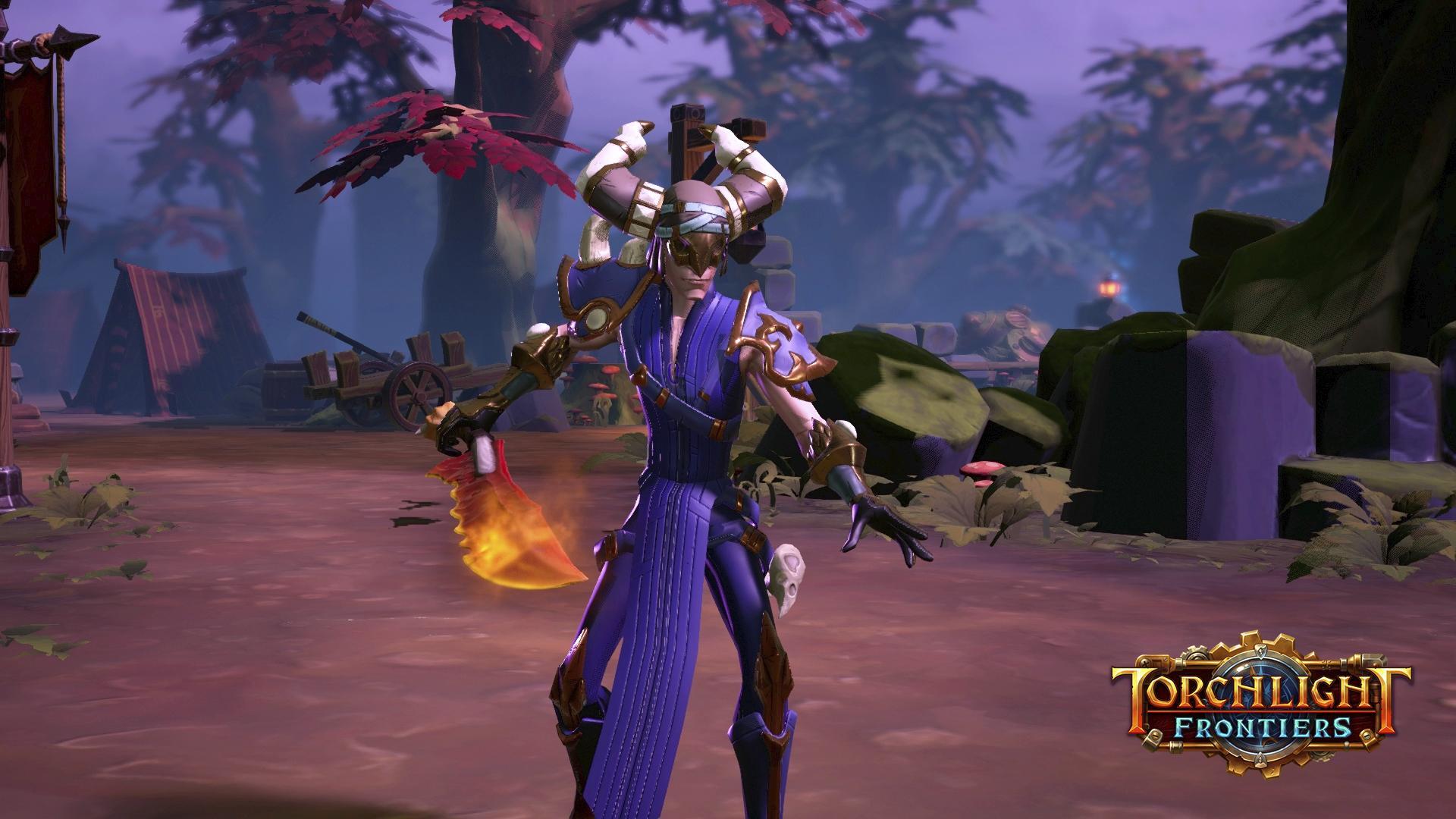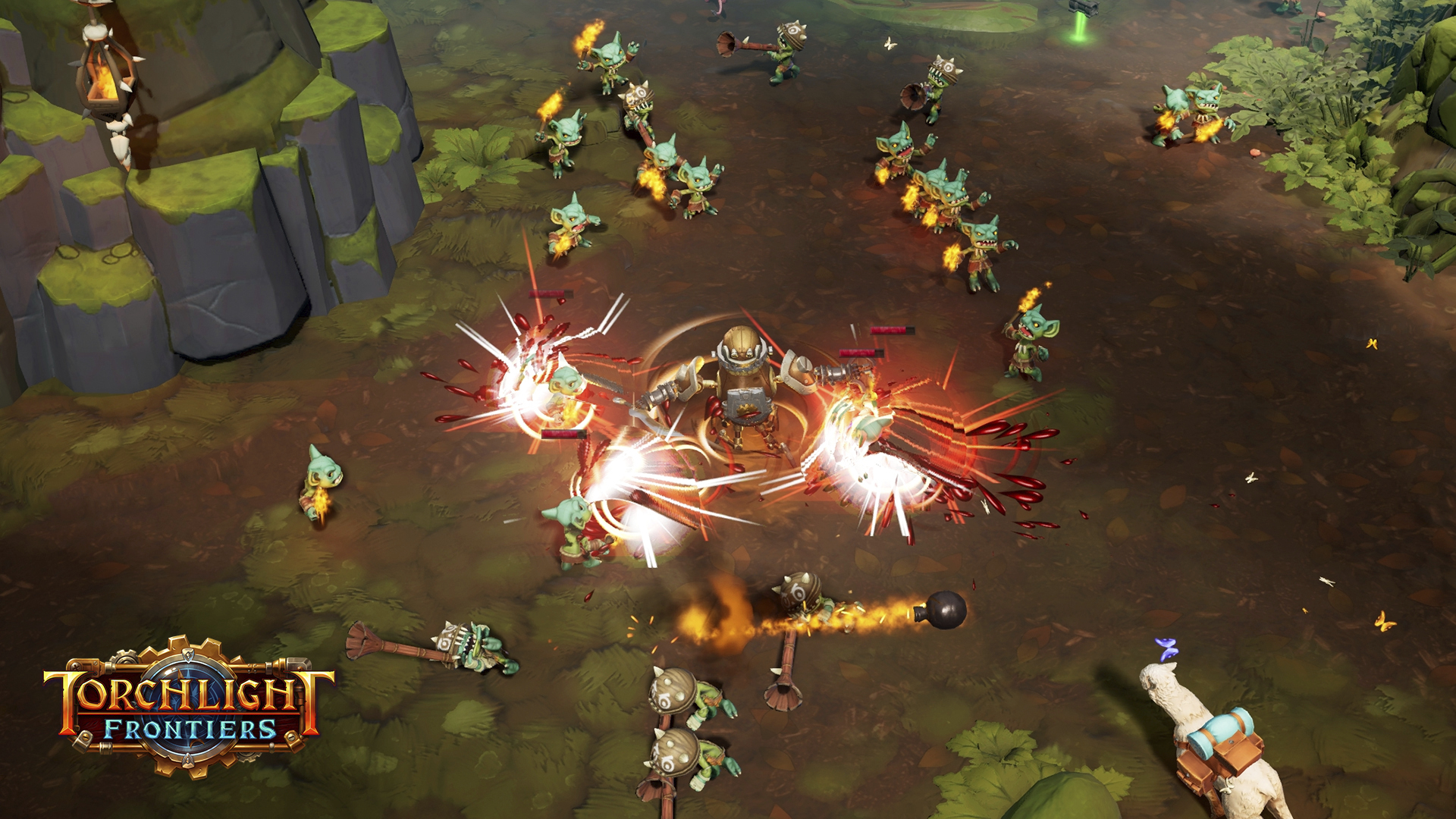While anxiously biting our nails and waiting for Torchlight Frontiers, we managed to ask a few questions to Tyler Thompson, Project Lead at Echtra Games. Read on to learn more about the game, including tidbits on the business model, class design, player numbers and how player feedback is shaping up the game.
Can you introduce yourself to our readers?
My name is Tyler Thompson and I’m the Project Lead here at Echtra Games. Before joining the team, I was also the Project Lead/Game Programmer at Blizzard North, Director of Technology at Flagship Studios, Producer at EA, plus Lead Software Engineer and Group Technical Manager at Blizzard. Some of the games I’ve worked on include Diablo II, Diablo II: Lord of Destruction, SimCity and The Sims 4. I also did some early work on Diablo III at Blizzard and Hellgate: London with Flagship Studios.
How many classes do you plan to have on release? Are you considering other unconventional classes such as the Forged, or prefer to focus on traditional archetypes?
We like to keep our announcements on character classes pretty secret. These are some of the most important and hard-to-make elements of the game. We’ve already announced two classes, the Forged and the Dusk Mage, but we definitely agree with fans that two classes isn’t enough to have a well-rounded ARPG.
Torchlight has a history of non-standard character classes. We have been trying to take some design risks with each class so that players have a new, unique experience in Torchlight Frontiers. The fans have really gravitated to some classes over others and have been teaching us what works and what doesn’t.
For instance, the Forged had a starting skill that we felt was dramatic and powerful. It takes all of the heat that the class built up, pulls monsters towards itself and then releases a massive explosion. However, players found that it was too slow and risky. They were literally running away from bosses to use this melee skill in the corner where it was safe. They used it to get rid of the heat, but they found that bosses would hit them a couple times while they tried to use it. In Alpha 2, we tried giving the Forged a big defensive buff as the skill builds up. Players still found it too risky. Now, we are trying to make it much faster – removing some of the drama that we loved, but making it feel better for players.
So yes, we are taking some risks with our classes, but our players are helping us evolve these classes into something that they like.
Was it difficult to settle for a free-to-play business model, also due to the buy-to-play legacy of the Torchlight series? Your philosophy mentioned rejecting pay-to-win, but selling specific Relic Weapons won’t become a concern?
We want to keep making this game together with our fans for years. We see free-to-play as the best way to make that happen – providing both a way to keep development moving forward and maintain a large fan base.
We shared our free-to-play philosophy with our fans so that we could get the conversation going. We’ve been discussing the definitions of “win” and “power” and the many ways that we could do things right or wrong. We will keep the conversation going. It’s a controversial topic involving money, time, fairness and past pain. We are listening – just like we have listened to so many other discussions about the game.
The best thing we can do at this point is show people our philosophies in the game. We have to prove that the game is fun for someone who doesn’t spend any money – which many players are skeptical about.
Relic Weapons are not a typical ARPG item. They don’t randomly drop, they are crafted, they level, they have skills, and they have a cool down. We have decided to offer Relic Weapons in the cash shop, but the ones that can be purchased won’t give players any advantages over the weapons that are crafted organically and leveled up. So far, our Alpha testers seem to be pretty satisfied with this system. The items can typically be crafted after a few hours of play – including the one 10-12% chance boss-dropped item. Several players crafted multiple Relic Weapons during the two Alpha weekends.
Considering the MMO-ish nature of Torchlight Frontiers, what is the maximum number of players that we can expect in the open world areas and in the instanced dungeons?
When we talk about player limits, we focus on what feels good in our game. When too many players are pushed together, an ARPG can become a screen full of FX and individual players feel disconnected and confused. We’ve tried up to 20 players in our public areas, and it felt crowded and anonymous. So, we’ve settled on 8 players as a limit for public areas. This has felt like enough to meet strangers and possibly party with them. The private areas work with our party limit of 4 – which feels like the upper limit for that screen full of particles.
What kind of player feedback are you getting regarding the horizontal progression system and the gear sets? Is the community pleased with this direction or requesting some changes leaning towards a more classic leveling system?
We’ve gotten a bunch of feedback in this area and made some significant changes. The following are some concrete examples:
In Alpha 1 & 2, item level requirements were handled with a gear skill that needed to be leveled up in the Fort. Players complained about the trip back to the Fort, the cost of these skills competing with other skills, and the general unfamiliarity with this type of system. We’ve completely replaced the gear skills that were based on a per-Frontier level – with an experience bar on the HUD that creates a level up moment, increasing health per level and caps when visiting lower level areas, etc…
During our first two playtests, we featured waypoints as a single-bind system – much like WoW and Everquest. We thought that this would make the world feel larger. This made players really frustrated when they had to go back to a previous Frontier or an earlier quest. We’ve changed the waypoint system to be more like a traditional ARPG, where players unlock each waypoint along the way.
Also during Alpha, players were reluctant to go to another Frontier. When we talked to them in Discord about it, we learned that one of the major obstacles was managing gear. We heard players ask several times before about how they would manage each set of gear for each place. So, we added a wardrobe fort object that stores, shows off and swaps a full set of gear for the player. This gives the player storage, decoration and convenience. Hopefully, it also gets them trying out more Frontiers.
Have you stumbled across any major development hurdles? I’ve read that adding WASD control “introduces a surprising amount of problems”, for example. Is that still a thing in your to-do list?
At this point, one of the hardest things for us to tackle is refining our features, once they are working. Getting a skill to be in a usable state only accounts for about 10% of the work. The rest, including polishing and tuning feature, constitutes the other 90%.
WASD is a good example of this. Lots of players asked for WASD movement input. One of our engineers quickly got WASD to work in a basic way using the arrow keys. It works. It’s not using the WASD keys – which would require that we remap the S key from skills. We might also need to add an option for it in the key bindings. I just tested it, and when I hold down shift the player runs at a strange angle – halfway between the run direction and the cursor. It still needs the last 90% of the work to be done and can’t be shipped yet – it still needs a few days of work.
Today’s challenge is making sure we get that last 90% of quality and making sure we don’t start too many new things before finishing the others.
Thank you for your time!
If you click on a link and sign up for a game we may receive a small commission. Read our affiliate policy.





















 Facebook
Facebook Twitter
Twitter RSS
RSS